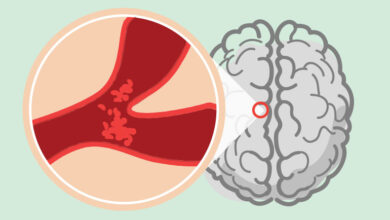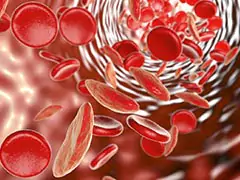“Debilitating fatigue” is one of the very first signs of lupus Sarah Stothers, RN, names. Talking with Medical Daily from the Lupus Foundation of America where she works as a national nurse health educator, she lists the most common lupus symptoms (for both females and males):
- Extreme tiredness
- Headaches
- Painful or swollen joints
- Fever
- Anemia
- Swelling in the feet, legs, hands, and/or around eyes
- Pain in chest when breathing deeply
- Sun- or light-sensitivity
- Hair loss
- Abnormal blood clotting
- Fingers turning white and/or blue when cold
- Mouth or nose ulcers
- A butterfly-shaped rash across the cheeks and nose (in earlier times this common rash reminded physicians of a wolf’s bite hence the name “lupus,” Latin for “wolf”)
“Some people look completely normal yet they feel awful,” said Stothers, who added “doing the smallest task is impossible.” The disease is often isolating, she explains, “because you look so normal on the outside, and that’s probably the biggest thing: ‘But you look completely fine!’”
Called “the great imitator,” lupus symptoms often mimic those of some heart, lung, muscle, and bone diseases as well as blood disorders, diabetes, thyroid problems, Lyme disease, fibromyalgia, and rheumatoid arthritis. This sharing of symptoms suggests to some scientists lupus is connected to autoimmune and hormonal disorders.
“Lupus does not run in my family,” Dixon said. “The only thing that does run in my family is psoriasis, which is another autoimmune disorder.”
And This is Key: Because many lupus disease patients are diagnosed with “a second or third autoimmune disorder” at some point in their lives, anyone who is diagnosed with one of these diseases (or whose family history contains one) should be on the lookout for lupus symptoms. By catching it early, Dixon said, you may be able to avoid a dramatic flare-up like the one that nearly killed her.
(The most common autoimmune diseases are rheumatoid arthritis, reactive arthritis, celiac disease, pernicious anemia, vitiligo, scleroderma, psoriasis, inflammatory bowel diseases, Hashimoto’s disease, Addison’s disease, Graves’ disease, Sjögren’s syndrome, and type 1 diabetes. In each of these disorders, the immune system mistakenly attacks bodily tissues as if they were germs, viruses, or other foreign invaders).
Lupus: Causes and Treatments
“We know there’s a genetic component to lupus,” said Stothers, whose voice radiates intelligence and compassion. She explains how simply carrying the gene does not mean you will develop lupus, environment and hormones also play a role. Specifically, scientists believe estrogen is involved, due to the higher incidence among women and the average age range for diagnosis.
“It is predominately diagnosed between the ages of 15 and 44,” said Stothers, who added, “that’s the time when women are most fertile.” In fact, many women are first diagnosed while pregnant or after giving birth, when their hormones are in flux, she says. Still, Stothers has seen patients diagnosed in their 70s and 80s (and here she uses the word “unpredictable”), so even this is not entirely definite.
Here are some great diet tips on foods that can help with managing lupus symptoms.
Support for Individuals with Lupus Disease
Patients often live long, productive, and happy lives, says Stothers, but to stay healthy, they must monitor their own lupus symptoms as does Dixon. Though she gave up her dream of a high-powered fashion career in New York City, she continues to work from home while advocating for the Lupus Foundation. Naturally, though, self-awareness can be challenging in a busy world, a busy life.
“That’s the hard thing with lupus, the unknown of when you’re going to have a really bad flare-up,” said Dixon, who explained that patients have mild, moderate, or severe flare-ups at any time. “Everyone has to figure out her own triggers,” she said, explaining how stress, the common cold, and working too hard are hers.
Generally, Stothers finds lupus patients to be “very type A people” who may need some help, but “somehow they make it work. People with lupus are probably the most courageous people I’ve ever met and the most in tune with their bodies,” she said. “I am very much privileged to know them.”
While Stothers and health care professionals like her offer compassion and lend emotional support, Dixon who is grateful for the support she receives from family, friends, and the Lupus Foundation, tells patients they must become their own “biggest cheerleader.”
“At the end of the day, you’re going to be the one to get yourself out of bed,” Dixon said.




